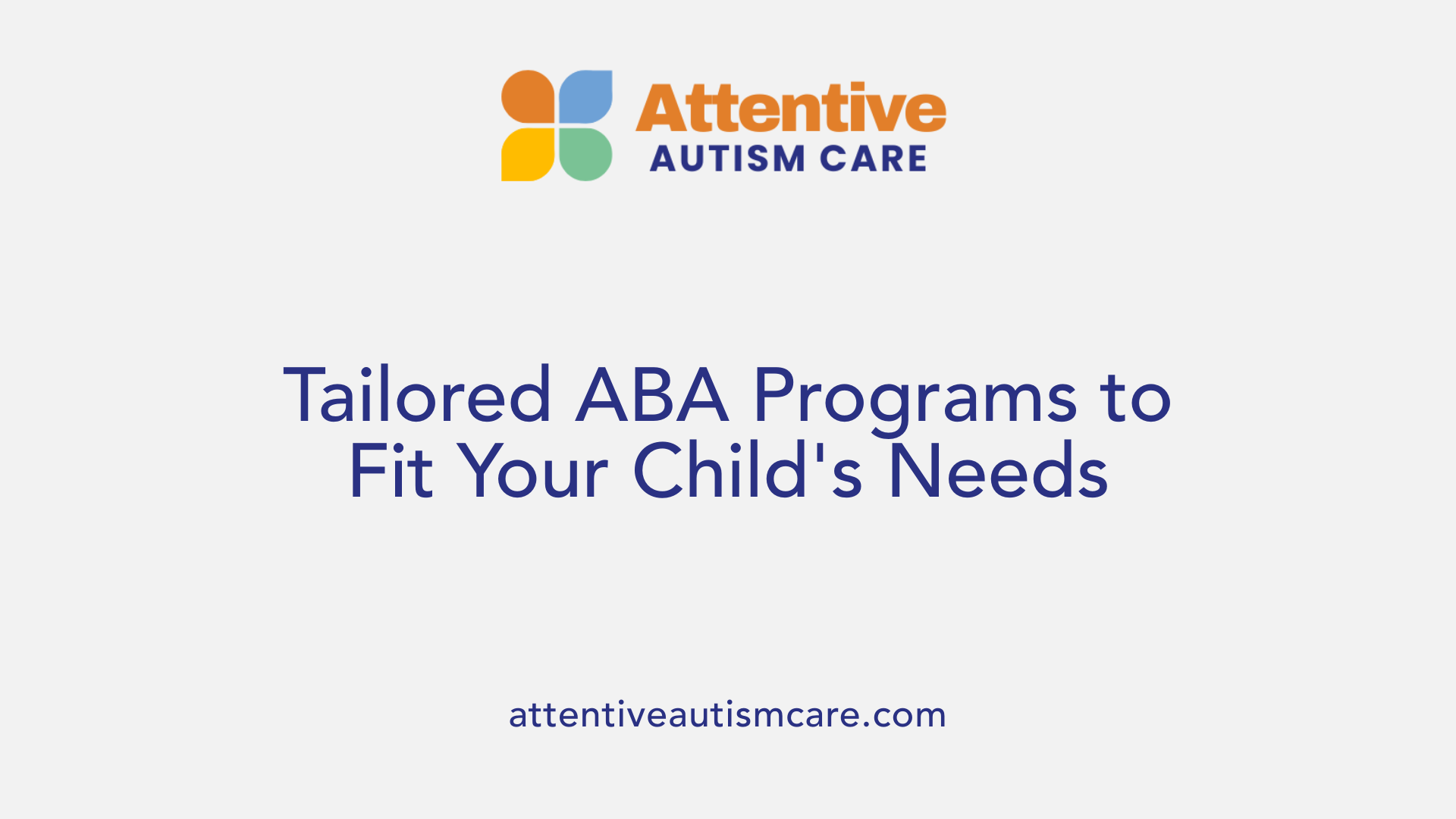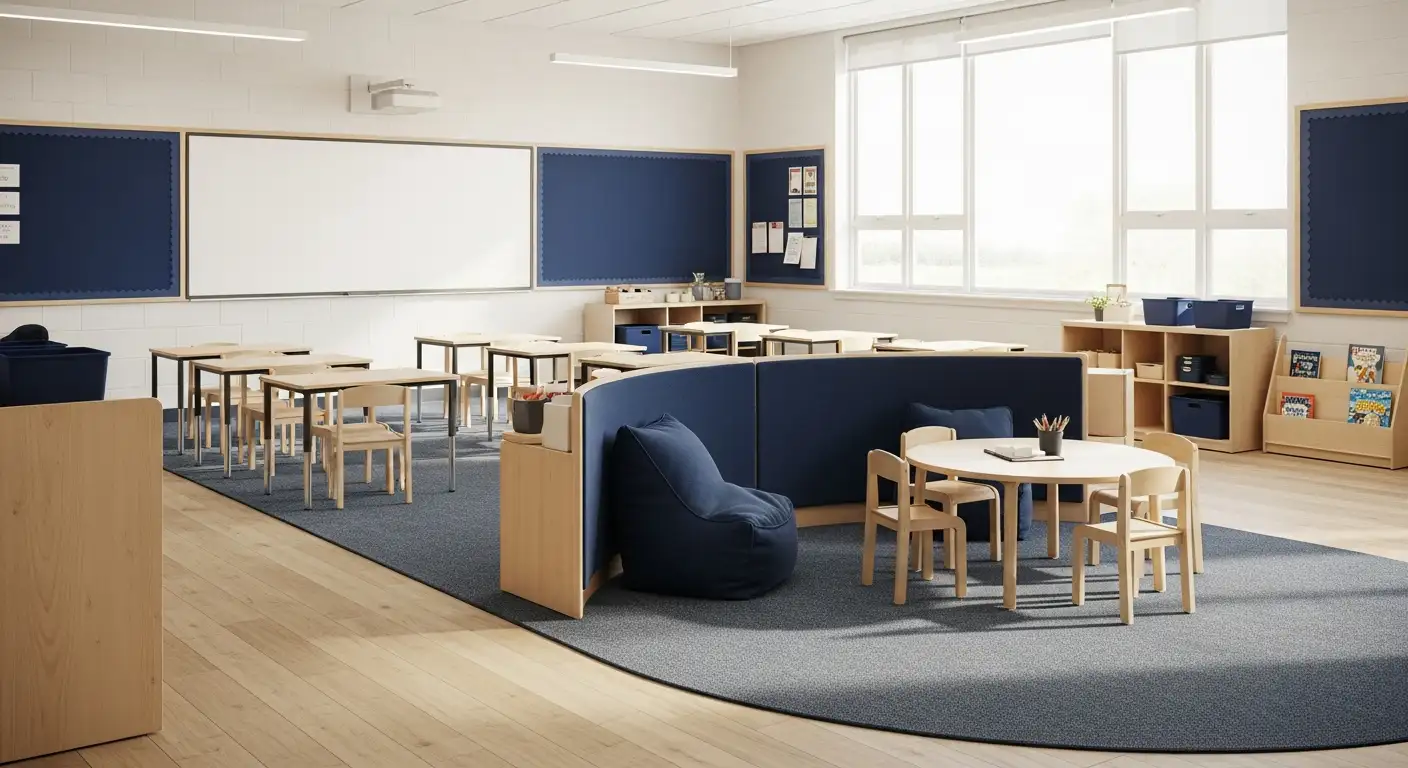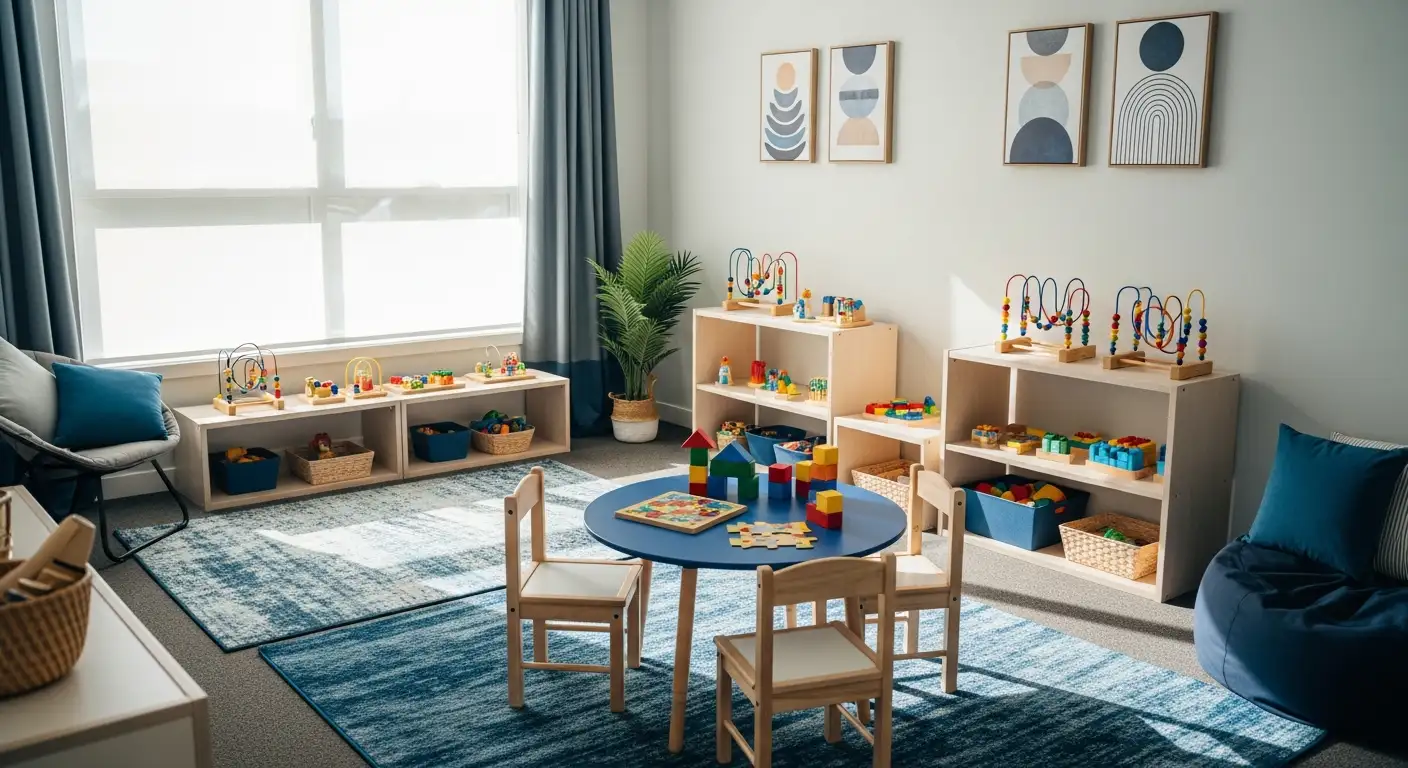How to Manage Autism-Related Behavioral Challenges at Home
Effective Strategies for Addressing Autism-Related Behavioral Challenges at Home

Understanding Behavioral Challenges in Autism
Families managing autism-related behavioral challenges often seek effective, evidence-based strategies to support their children at home. These challenges frequently stem from communication difficulties and environmental factors, which may lead to behaviors such as aggression, self-injury, tantrums, or noncompliance. This article explores how Applied Behavior Analysis (ABA) therapy and complementary strategies can empower families to foster positive behaviors, promote independence, and improve quality of life for children with autism.
What is Applied Behavior Analysis (ABA) Therapy?
Definition and Purpose of ABA Therapy
Applied Behavior Analysis (ABA) therapy is an evidence-based, data-driven approach designed to increase helpful and adaptive behaviors while decreasing harmful or challenging behaviors. Its primary focus is on observable and measurable actions to promote meaningful change. ABA is specifically used for individuals with autism spectrum disorder (ASD) to develop essential social, communication, language, and daily living skills.
Behavior Modification Principles
ABA uses the principles of behavior modification, relying heavily on positive reinforcement to encourage desired behaviors. It emphasizes consistent data collection to monitor progress and makes adjustments as necessary. Structured, understandable plans avoid jargon and ensure families and caregivers are active partners in the intervention process.
Techniques Used in ABA
Key techniques in ABA include reinforcement (rewarding success), prompting (helping to initiate behaviors), shaping (gradually refining behaviors), and modeling (demonstrating behaviors). Structured teaching methods such as Discrete Trial Training and Natural Environment Teaching form part of therapy, providing short, clear tasks with systematic removal of prompts to encourage independence.
Settings and Providers of ABA Therapy
ABA therapy is intensive and often involves one-on-one sessions conducted by trained therapists, typically supervised by a Board Certified Behavior Analyst (BCBA). It can take place in homes, schools, or community settings. Family involvement and consistency across environments are critical to achieving effective outcomes.
Research Supporting ABA Effectiveness
Research including landmark studies like Lovaas (1987) demonstrated that ABA significantly improves cognitive functioning, communication, social skills, and reduces problematic behaviors in children with autism. Subsequent research reviews, such as Dawson (2011), reaffirm its efficacy, especially when started early and delivered intensively.
| Aspect | Description | Example/Notes |
|---|---|---|
| Purpose | Increase helpful behaviors, decrease harmful ones | Teaching communication, social skills |
| Core Principles | Positive reinforcement, data-driven decisions | Tracking progress to guide interventions |
| Techniques | Reinforcement, prompting, shaping, modeling | Use of visual schedules and timers to aid understanding |
| Settings | Home, school, community | Therapy by trained professionals under BCBA |
| Research Evidence | Proven improvements in multiple functional areas | Studies like Lovaas (1987) and Dawson (2011) |
Goals and Expected Outcomes of ABA Therapy
What are the main goals and expected outcomes of ABA therapy for individuals with autism?
The primary goal of ABA therapy for individuals with autism is to increase helpful behaviors and reduce problematic ones, enabling greater independence and improving quality of life. This includes fostering skills in communication, social interaction, self-care, and academics, tailored to each person's specific needs.
ABA therapy targets behavioral and developmental milestones such as language development, daily living routines, and social skills. Progress is continually tracked through systematic data collection to ensure interventions are effective and adjustments are made as necessary.
Positive reinforcement plays a central role in ABA, encouraging children to repeat desired behaviors by rewarding successful completion of short, simple tasks. This reinforcement facilitates learning and helps children acquire adaptive behaviors that replace challenging ones.
Expected improvements from ABA therapy include increases in cognitive functioning, language abilities, social engagement, and significant reductions in problematic behaviors. These outcomes contribute to better participation in social and community activities, fostering overall well-being.
ABA's individualized and evidence-based approach, supported by extensive research, makes it a highly effective intervention that systematically promotes meaningful growth in children with autism.
Designing and Customizing ABA Therapy Programs

How is an ABA therapy program designed and customized for each individual?
ABA therapy programs are carefully crafted to fit the unique needs of each child with autism. The process begins with thorough assessments by Board Certified Behavior Analysts (BCBAs), who observe the child, interview family members, and apply standardized tests. These steps uncover the child's strengths as well as areas that need support, forming the foundation for personalized goal setting.
Next, goals are collaboratively developed with families, focusing on vital areas such as communication skills, social interaction, daily living activities, and the reduction of challenging behaviors. The goals are designed to be clear, measurable, and suited to both the child's developmental level and the family's priorities.
The treatment plan itself is tailored to the child's preferred learning style and motivational factors. Evidence-based methods, including discrete trial training and natural environment teaching, are employed with engaging, preferred activities to maximize participation and success.
Family involvement plays a crucial role throughout the program. Caregivers receive training to apply reinforcement strategies consistently outside therapy sessions, which helps generalize skills across different environments.
Continuous progress monitoring is integral to the therapy’s effectiveness. Data collection techniques and ongoing behavioral assessments help track improvements and inform necessary adjustments, ensuring the program evolves alongside the child's needs.
Who Provides ABA Therapy?

Who provides ABA therapy and what qualifications do these professionals typically have?
ABA therapy is delivered by specialized professionals including Board Certified Behavior Analysts (BCBAs), Board Certified Assistant Behavior Analysts (BCaBAs), and trained therapists. These individuals generally hold at least a bachelor's degree in psychology, education, or related fields, but most have a master's degree in Applied Behavior Analysis or a closely related discipline. This advanced education is aligned with certification requirements established by the Behavior Analyst Certification Board (BACB).
Certification involves completing 1,500 to 2,000 hours of supervised practical experience and passing a rigorous certification exam. Many states also require licensure or registration to legally practice ABA therapy, ensuring providers meet professional standards.
These providers possess the skills needed to assess behavioral challenges, develop and execute individualized treatment plans, and monitor progress. Key professional qualities include patience, strong communication abilities, ethical behavior, and a commitment to evidence-based practices.
Ongoing education is essential to stay current with advances in ABA techniques and regulations, supporting high-quality and effective therapeutic services for children with autism spectrum disorder and other developmental challenges.
Core Techniques in ABA to Manage Challenging Behaviors
How Are Reinforcement, Prompting, Shaping, and Modeling Used in ABA?
ABA therapy employs several specific techniques to encourage positive behaviors and reduce challenging ones. Reinforcement involves rewarding desired behaviors to increase their occurrence, while prompting provides cues or assistance to help a child perform a behavior correctly. Shaping gradually adjusts behaviors by reinforcing closer approximations to the target behavior. Modeling demonstrates the desired behavior for the child to imitate. These methods work together to teach new skills effectively.
What Is the Role of Teaching Adaptive Replacement Behaviors?
A fundamental aspect of ABA is teaching adaptive replacement behaviors that serve the same function as problematic behaviors. Instead of simply eliminating challenging actions, therapists guide children to develop positive behaviors that meet their needs. This approach helps reduce harmful behaviors by providing functional alternatives, improving communication, and fostering independence.
How Do Visual Timers and Schedules Support Behavior Management?
Using visual aids like timers and schedules is crucial in ABA for children who struggle with time perception or language. For instance, analog clocks or sand timers help children anticipate transitions and reduce frustration-related tantrums. Visual schedules clearly outline daily activities, making expectations understandable and enhancing task completion. These strategies promote predictability and security, which are important for managing behaviors.
Why Is Avoiding Reinforcement of Undesirable Behaviors Important?
ABA carefully avoids reinforcing challenging behaviors to prevent their continuation or escalation. Rather than commands like "stop" or "no," the approach uses distraction and redirection to guide children toward more appropriate actions. Consistent non-reinforcement of negative behaviors paired with positive reinforcement of desired behaviors creates a supportive learning environment that encourages behavior change.
Establishing Predictable Routines and Clear Expectations at Home

Importance of consistent routines
Children with autism benefit greatly from predictable routines because consistency helps them understand what is expected and feel secure. When routines are stable and followed consistently, children experience fewer surprises, which lowers anxiety and reduces challenging behaviors like tantrums and noncompliance.
Use of visual schedules and activity displays
Visual schedules serve as an essential tool for children who struggle with language or processing verbal instructions. By displaying daily activities or toys visually, caregivers provide clear, concrete cues that help children anticipate upcoming tasks and transitions. This visual communication fosters independence and smooths transitions between activities.
Setting clear activity expectations and endings visually
Defining clear beginnings and endings for activities—especially using visual markers—supports children in managing their time and behavior. For example, showing when a playtime will end helps children prepare emotionally and reduces resistance.
Benefits of predictable environments for behavior management
Creating a structured and predictable environment not only promotes a child’s sense of security but also minimizes sensory overload and frustration. Such an environment facilitates better focus and emotional regulation, leading to improved behavior overall. Consistent routines, combined with visual supports, form the foundation for effective behavior management at home.
Positive Behavior Supports: Rewards, Choices, and Empowerment
How does earning privileges serve as positive reinforcement in ABA therapy?
Earning privileges is a powerful form of positive reinforcement used in ABA therapy to encourage and strengthen appropriate behaviors. When children with autism display desired behaviors, such as following instructions or completing tasks, they receive privileges like extra playtime, access to favorite toys, or preferred activities. This reward system not only motivates the child but also clearly links good behavior with positive outcomes, reinforcing learning and helping to establish lasting behavioral improvements.
How does providing choices help reduce frustration in children with autism?
Offering choices empowers children by giving them a sense of control over their environment and activities. For children with autism, who often struggle with transitions or unexpected changes, having options can significantly reduce frustration and anxiety. Choices might include selecting between two toys, deciding the order of activities, or picking a snack. This strategy promotes cooperation and smooths transitions, making daily routines more manageable and less stressful for both the child and caregivers.
How does encouraging empowerment smooth transitions and activities?
Empowerment through positive behavior supports enables children with autism to participate more actively in their learning and daily life. When children feel supported and understood, they are more likely to engage willingly in tasks and transitions. Using reinforcement systems, offering clear choices, and responding patiently helps children develop autonomy and confidence. This approach fosters a cooperative environment where transitions and activities proceed with fewer behavioral disruptions, enhancing overall progress and emotional wellbeing.
Managing Sensory Overload and Emotional Regulation

Reducing Sensory Input and Overload
Children with autism often experience sensory overload which can trigger challenging behaviors such as tantrums or aggression. One effective strategy is to decrease sensory input by moving the child to a quieter place or controlling the sensory stimuli in their environment. This reduction helps minimize overstimulation and promotes emotional calmness.
Using Quieter Spaces for Calming
Providing access to designated quiet areas allows children to self-regulate when feeling overwhelmed. These spaces offer a break from excessive noise, bright lights, or chaotic activity, creating a calm atmosphere that supports emotional regulation and prevents behavioral escalation.
Maintaining Calm, Patient Interactions
Caregivers and therapists play a vital role in modeling calm behavior. Interacting with children patiently, using a quiet tone, and maintaining a relaxed demeanor encourages children to regulate their emotions better and respond positively to interventions.
Teaching Coping Skills to Tolerate Delays
Incorporating coping strategies into therapy helps children tolerate delays and manage frustration. Techniques include teaching functional communication to express needs and using visual timers or countdowns to prepare children for transitions. These skills reduce the likelihood of challenging behaviors in stressful situations.
These approaches, when combined, create a supportive environment that addresses sensory challenges and enhances emotional regulation for children with autism.
Functional Behavioral Assessment and Personalized Intervention Plans

What is the importance of understanding behavioral context and functions?
Understanding the context and functions of behaviors is essential in developing effective interventions for children with autism. Many challenging behaviors, such as self-injury or tantrums, often arise due to communication difficulties or environmental triggers. By assessing these behaviors functionally, therapists can pinpoint their underlying purpose—whether to gain attention, avoid tasks, or fulfill a sensory need. This insight allows for creating personalized treatment plans that address the root cause rather than merely the symptoms.
How are prevention, replacement, and response strategies developed?
Effective behavioral interventions for autism combine three strategic approaches:
Prevention: This involves making transitions and activities predictable to reduce stress that triggers challenging behaviors. Techniques include visual schedules, timers, countdowns, priming, and social stories. These strategies help the child anticipate upcoming changes and feel secure.
Replacement: Teaching new, functional skills that serve the same purpose as problematic behaviors. For example, functional communication training helps children express needs appropriately rather than through tantrums. Other replacement strategies include teaching coping skills, tolerating delays, and fostering daily living skills.
Response: Employing positive reinforcement to encourage desired behaviors while using extinction protocols to reduce undesired behaviors. It's important to note that extinction phases can involve temporary increases in undesirable behaviors ('behavioral bursts'), requiring careful management.
What role does functional communication training play?
Functional communication training (FCT) is vital in reducing challenging behaviors by equipping children with autism with alternative, socially acceptable ways to communicate their needs and wants. FCT empowers children to replace behaviors like aggression or self-injury with requesting help, expressing feelings, or choosing activities. This reduces frustration and helps integrate the child more fully into social settings.
How do personalized, comprehensive approaches help reduce problematic behaviors?
Personalized intervention plans, guided by thorough functional behavioral assessments, tailor strategies to each child's unique needs, strengthening their social, communication, and daily living skills. These plans integrate preventative measures, replacement training, and response techniques to address both immediate behaviors and promote long-term development. Collaboration with families ensures socially significant goals are targeted, making interventions more meaningful and sustainable. Such comprehensive approaches have demonstrated significant improvements in behavior and skill acquisition in children with autism.
Practical Home Strategies: Visual Supports and Distraction Techniques
How can visual schedules and objects support children with autism?
Visual schedules and displaying activities or toys visually serve as powerful tools at home, especially for children who struggle with language comprehension. By laying out clear expectations through pictures or icons, these aids enhance predictability and help children anticipate what is coming next, facilitating smoother task completion.
What about transition objects during changes or unfamiliar settings?
Allowing children to bring transitional objects, such as a favorite toy or blanket, provides comfort and a sense of security during changes or when facing unfamiliar environments. This simple strategy eases anxiety and promotes emotional regulation.
How can distraction and redirection be used instead of 'stop' or 'no' commands?
Rather than using negative commands like "stop" or "no," parents and caregivers can gently distract and redirect the child's attention away from challenging behavior. This prevents escalation and promotes engagement in more positive activities without confrontation.
Why are short, clear, and concrete directions important?
Delivering instructions that are brief, explicit, and straightforward ensures that children clearly understand what is expected. Clear directions reduce confusion, help children focus, and support successful task completion.
By integrating these visual and behavioral strategies at home, caregivers create a supportive environment that reduces stress, encourages positive behaviors, and promotes independence in children with autism.
Recognizing and Utilizing Teachable Moments to Foster Social Skills
Encouraging polite requests and communication
Teachable moments are opportunities that arise naturally during daily interactions to help children with autism develop social skills. For instance, when a child shows interest in a toy, caregivers can encourage them to ask politely, such as saying "please" or "may I have that?" This approach promotes positive communication and reduces negative behaviors associated with frustration.
Using structured, hands-on, and visual activities
Employing structured and visually supported activities enhances focus and engagement. Hands-on tasks provide clear, concrete experiences that support learning and calmness. Visual aids like schedules or activity displays communicate expectations effectively, especially for children with language difficulties.
Supporting engagement and emotional regulation
Maintaining a calm and patient demeanor during interactions helps children regulate emotions, fostering a supportive setting for skill development. Recognizing and responding promptly to signs of distress with strategies like distraction or redirecting attention minimizes escalation of challenging behaviors.
Role of family in reinforcing new skills and behaviors
Families play an essential role in applying ABA principles through everyday routines. Collaborating closely with therapists, family members reinforce newly acquired social skills consistently, creating predictable environments that encourage skill generalization and confidence in communication.
These methods collectively help children with autism build meaningful social abilities by capitalizing on natural learning opportunities, supported by structured and empathetic guidance.
Empowering Families to Support Positive Change at Home
Managing autism-related behavioral challenges at home is a complex but achievable goal through understanding, patience, and scientifically grounded strategies such as ABA therapy. By integrating individualized interventions, establishing routines, using visual supports, and fostering positive reinforcement, families can create a supportive environment that encourages growth and independence. Family involvement and collaboration with qualified professionals ensure sustained progress and help children with autism thrive in their daily lives.
References
- ABA Therapy vs CBT for Autism: Which is Better?
- 15 Behavior Strategies for Children on the Autism Spectrum
- Behavioral Therapy for Autism Spectrum Disorder in Children
- Treatment for Behavioral Issues in Autism
- How to Become an ABA Therapist - School of Education
- A Comprehensive Guide to ABA Therapist Requirements
- How to Become an Applied Behavior Analyst (ABA) Therapist
- Applied Behavior Analysis (ABA)



































































































